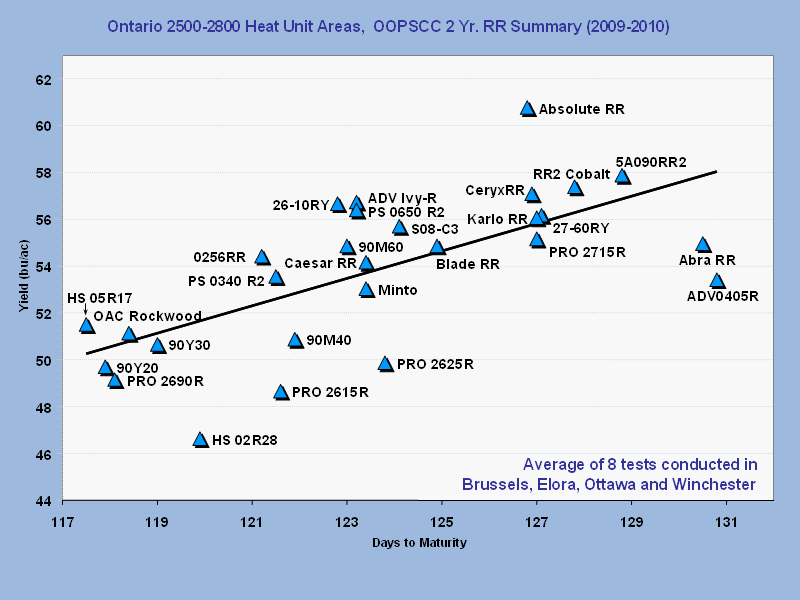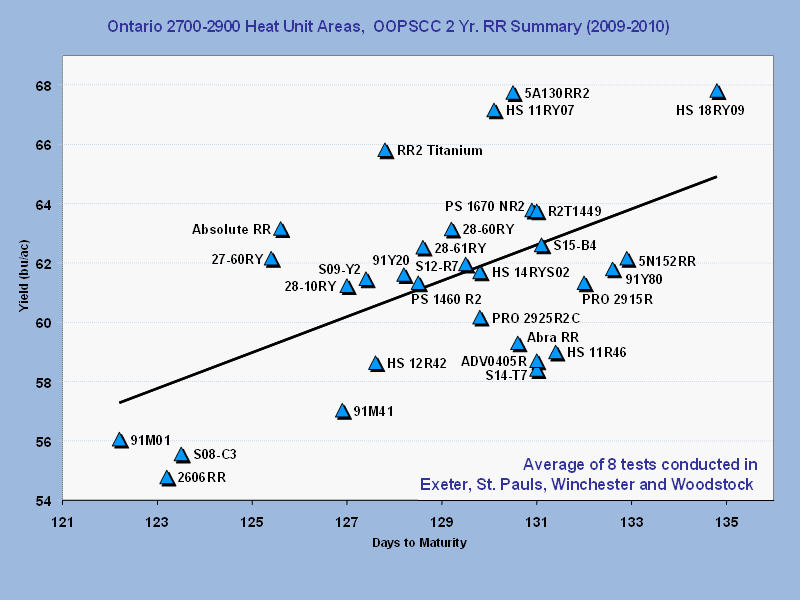Cropside: Do longer maturity beans really yield more?
AGRONOMIC INFORMATION FROM ONTARIO'S CROP SPECIALISTS

USING YIELD-MATURITY GRAPHS TO MAKE THE MOST OF YOUR CROP
A GOOD WAY to look at the information presented by the Ontario Oil and Protein Seed Crop Committee in the Soybean Performance Trials is on a Yield – Maturity graph. These graphs give an overview of both yield and the growing days necessary for different varieties. The difference in the yield potential of varieties in any given Crop Heat Unit (CHU) zone is huge.
For instance in the 2500 to 2800 CHU zone, yields ranged from 47 to 61 bushels per acre. However, keep in mind that soybeans are just like corn in that longer maturing cultivars generally yield more than shorter ones. So when comparing varieties it is always important to make sure they have similar maturities.
From these graphs it’s clear that longer maturing beans yield more than shorter day beans. So when choosing a variety it’s important to grow the longest day bean possible for maximum yield. In the 2500 to 2800 CHU zone the yield difference between a 119 day bean compared to a 129 day bean goes from about 51 to 57 bushels per acre. This large difference in yield potential can significantly change the economics of growing soybeans.
The natural question then is “how long a bean can I grow?” We are presently studying that question. So far we have had very good luck with growing beans that are at least 200 CHUs more than normal as long as they are planted early. In some cases we have been able to get away with 300 CHU more if the beans were planted early enough.


When choosing the highest yielding beans for your operation keep these points in mind:
- Choose the longest day bean possible. This will take some experimentation. Selecting the fullest season variety will make the maximum use of the growing season. If winter wheat is to follow the beans, stay within your recommended heat unit variety because the hit on wheat will be worse than possible gains to the soybeans. If wheat is not going to follow the beans, choosing a variety that is 100 to 200 CHUs more than normal can easily add three to five bushels per acre in yield potential.
- Choose at least two to three different varieties with different maturities in your operation to spread out the weather risk.
- Always choose varieties based on disease and pest resistance corresponding to the history of the field. For example, soybean cyst nematode resistant beans must be grown in fields with that pest.
For more variety information please visit: www.gosoy.ca. There are both two- and three-year Yield-Maturity graphs available along with other helpful information. •







